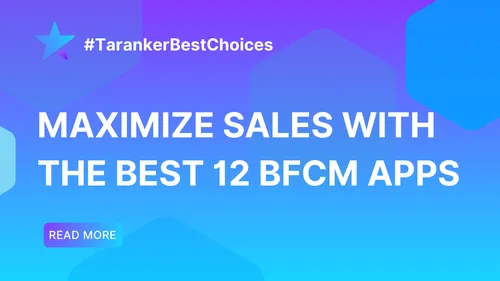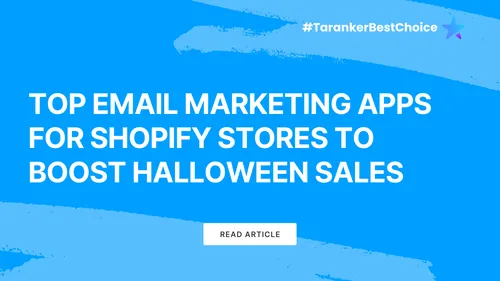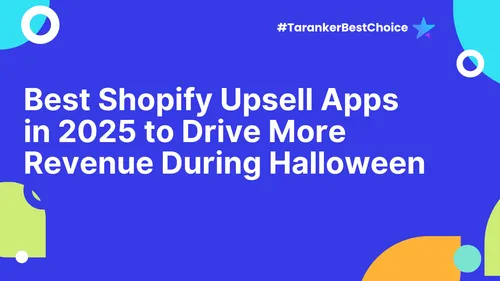Introduction
In a world where attention spans are shrinking and competition is growing, video marketing has emerged as the ultimate tool to capture interest, engage audiences, and drive conversions. For e-commerce merchants—especially those operating on Shopify—mastering video marketing isn’t just an advantage; it’s a necessity for standing out and scaling your business.
But creating a few random videos and hoping they go viral isn’t a strategy. Successful video marketing requires a structured, step-by-step approach that aligns with your brand goals, resonates with your target audience, and fits seamlessly into your overall marketing funnel.
In this comprehensive guide, we’ll walk you through: ✔ Why video marketing is critical for e-commerce success
✔ A detailed, step-by-step strategy to master video marketing
✔ Best practices to maximize engagement and ROI
✔ Tools and platforms tailored for Shopify merchants
✔ How to track performance and continuously improve
Let’s dive into how you can turn video marketing into a growth engine for your Shopify store.
1. Why Video Marketing Is Essential for E-commerce Growth

Before we get tactical, it’s important to understand why video marketing deserves a prime spot in your strategy.
a) Higher Engagement Rates
Videos are more engaging than static images or text. They grab attention, tell stories, and simplify complex information.
✔ Social media algorithms prioritize video content
✔ Websites with video see longer visitor durations
✔ Emails with video increase click-through rates by up to 300%
b) Boosts Conversions
Shoppers are far more likely to purchase after watching a product video.
📌 Stat: Including a video on a landing page can increase conversions by 80%.
c) Builds Trust and Brand Authority
Video humanizes your brand and fosters authenticity—two critical factors for winning customer trust in e-commerce.
2. Step 1: Define Your Video Marketing Goals

Every successful strategy starts with clear objectives.
Ask Yourself:
✔ Are you aiming to increase brand awareness?
✔ Do you want to drive traffic to specific products?
✔ Is customer education or retention your focus?
Common Video Marketing Goals:
-
Increase website traffic
-
Boost product conversions
-
Grow social media engagement
-
Improve customer retention and loyalty
-
Educate customers about product usage
Align your video goals with your broader Shopify business objectives for consistency and impact.
3. Step 2: Know Your Target Audience

Creating effective video content requires a deep understanding of who you're speaking to.
✔ What platforms do they use most (Instagram, TikTok, YouTube)?
✔ What type of content do they engage with (tutorials, unboxings, testimonials)?
✔ What problems or desires drive their purchasing decisions?
📌 Pro Tip: Use Shopify analytics, Google Analytics, and social media insights to gather demographic and behavioral data.
4. Step 3: Choose the Right Types of Video Content
Different stages of the customer journey call for different types of videos.
|
Customer Journey Stage |
Recommended Video Types |
|
Awareness |
Brand story, social media shorts |
|
Consideration |
Product demos, comparison videos |
|
Decision |
Customer testimonials, explainer videos |
|
Retention |
Tutorials, thank-you messages, UGC |
Start with 2-3 core video types and expand as you gain confidence.
5. Step 4: Plan Your Content Calendar
Consistency is key in video marketing.
✔ Map out weekly or monthly video topics
✔ Align video releases with product launches, promotions, or seasonal campaigns
✔ Repurpose content across platforms (e.g., turn a YouTube video into Instagram Reels)
📌 Tool Suggestion: Use Trello, Asana, or Notion to organize your video production schedule.
6. Step 5: Create High-Quality Yet Authentic Videos

You don’t need a Hollywood budget—modern consumers value authenticity over perfection.
Best Practices:
✔ Use natural lighting and clean backgrounds
✔ Keep videos concise and focused
✔ Include captions for accessibility and silent viewing
✔ Always feature a clear Call-to-Action (CTA)
📌 Beginner Tools:
-
Canva Pro for easy video editing
-
InShot for mobile editing
-
Vimeo Create for Shopify integration
7. Step 6: Optimize Videos for Each Platform
Different platforms have different requirements:
|
Platform |
Ideal Length |
Format |
Key Tips |
|
|
15-30 sec |
Vertical |
Use trending audio, hashtags |
|
TikTok |
15-60 sec |
Vertical |
Focus on entertainment & trends |
|
YouTube |
2-10 min |
Horizontal |
SEO-friendly titles & descriptions |
|
|
30-90 sec |
Square |
Add captions, strong hook upfront |
|
Shopify Store |
30-90 sec |
Flexible |
Showcase products, fast loading |
Always tailor your content for the platform where it will be published.
8. Step 7: Promote Your Videos Strategically
Don’t just post and pray—actively promote your video content.
✔ Embed videos on your Shopify product pages and blogs
✔ Share across all social media channels
✔ Include videos in email newsletters
✔ Use paid ads to boost reach for high-performing videos
📌 Pro Tip: Collaborate with influencers or brand ambassadors to expand visibility.
9. Step 8: Analyze Performance and Optimize
Track key video marketing metrics to understand what’s working:
✔ View Count — Basic reach indicator
✔ Engagement Rate — Likes, comments, shares
✔ Watch Time — How long viewers stay engaged
✔ Click-Through Rate (CTR) — How many take action
✔ Conversion Rate — Sales directly attributed to video views
Use tools like Google Analytics, YouTube Studio, Meta Insights, and Shopify’s dashboard for detailed reporting.
10. Step 9: Scale Your Efforts
Once you identify successful video formats and topics:
✔ Increase production frequency
✔ Expand to new platforms
✔ Test advanced strategies like shoppable videos, live streaming, or personalized video messages
Invest in better equipment or professional editing services as ROI grows.
Conclusion
Mastering video marketing is a journey—but one that pays off exponentially for Shopify merchants willing to invest time and strategy. By following this step-by-step approach, you can transform video from a nice-to-have into a core driver of engagement, trust, and sales.
💡 Action Step: Start small—create a product demo or testimonial video this week. Focus on consistency, authenticity, and alignment with your brand goals.
Remember, in 2025 and beyond, video isn’t just content. It’s commerce.













